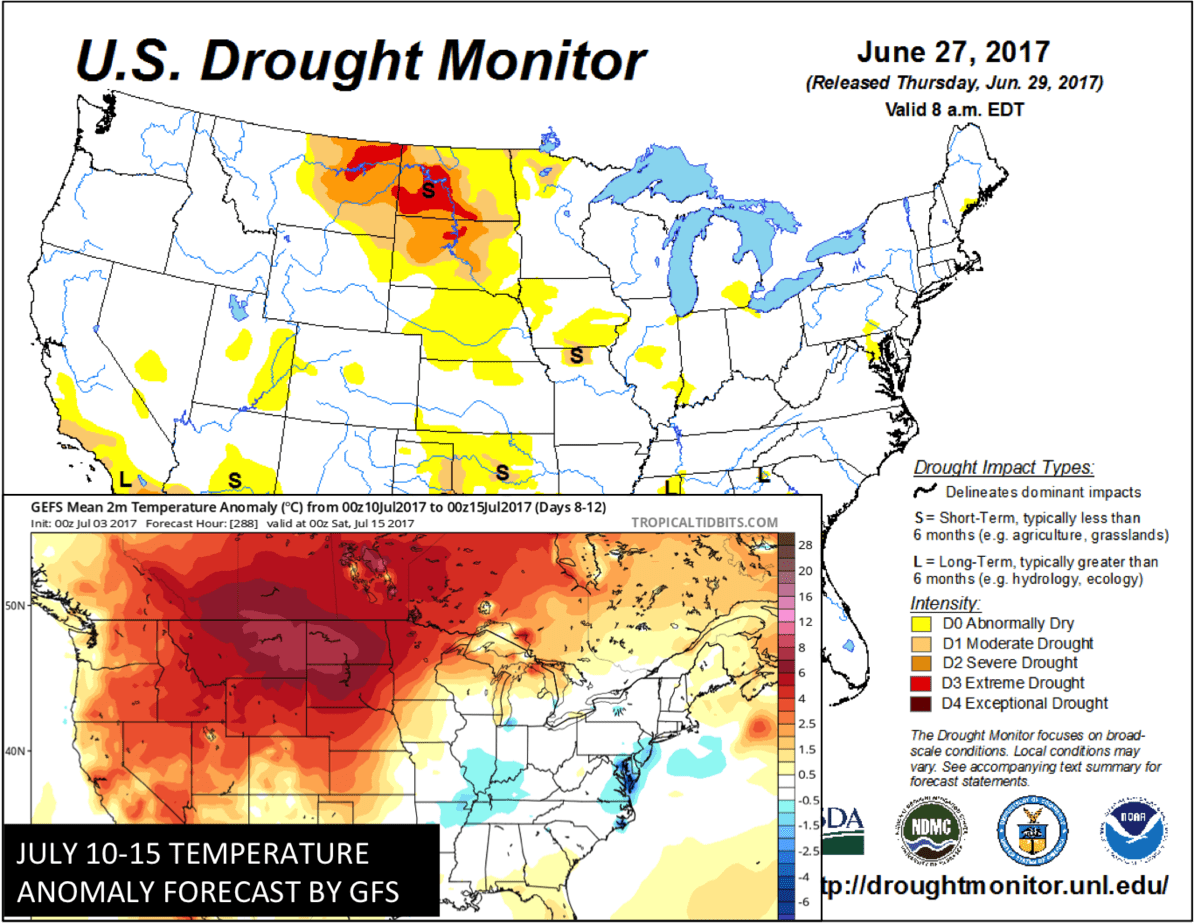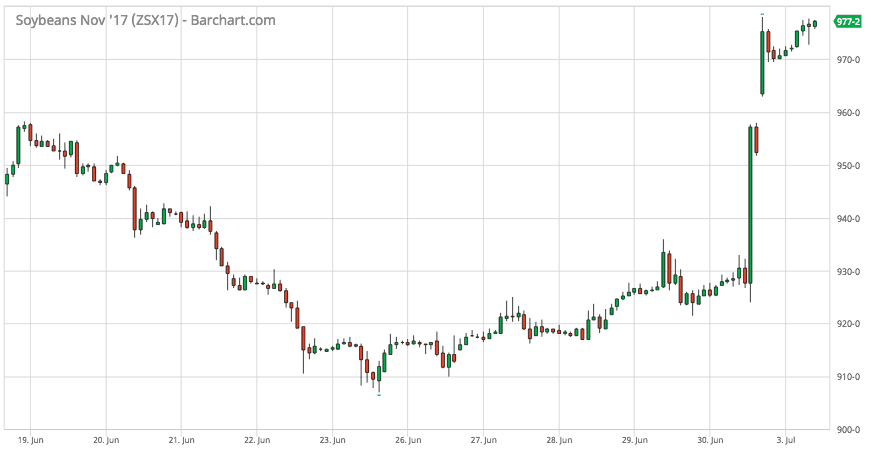Grain prices have taken off, fueled initially by the first bull market in wheat in years. A severe drought in spring wheat areas in North Dakota was the first sign of trouble. Problems in Canada, Australia, and Europe followed. Now, soybean traders are worried about dry conditions developing in the Midwest. Just over 10% of soybeans are grown in the Dakotas. The drought is spreading into Iowa, with hot dry conditions expected over the next few weeks. Moving forward, less moisture on the ground will increase daytime surface heating, allowing for warmer maximum temperatures.
 Image Credit: USDA & TropicalTidbits.com
Image Credit: USDA & TropicalTidbits.com
Natural Gas prices have lagged behind the grains, despite some hot weather in the southwest and midwest. The pattern just does not want to push the hottest temperatures in the the Ohio valley and the East Coast. New York, Illinois, and Pennsylvania consume large amounts of natural gas for cooling demand. Therefore, it will take a decent heat wave for natural gas to compete with the grain market.
On your mark, get set, Grain!
The USDA acreage report acted as a ‘starting gun’ last Friday. Analysts forecasted more soybeans planted due to the rain delays in corn. However, the report showed the opposite occured, with corn acreage increasing instead of soybeans compared to expectations. That news, combined with the weather threats allowed soybeans to regain a month’s worth of declining prices in just a matter of minutes.
SOURCE: Barchart
We mentioned this grain scenario to our free newsletter subscribers back in May. The commodity ETN:JJG is comprised of wheat, corn, soybeans. We knew that if our weather forecast verified, that some fireworks in one or more of these markets could occur. The ETN price has already reached 4 month highs. In the coming weeks, traders will want to know how long this dry, hot weather will stick around in the Midwest. If wheat & soybean conditions continue to drop, so will the end-of-year yield/production estimates. Any shift in the ridge could mean a big change for corn and soybeans. For more on if grain prices will go higher, email subscriptionsbestweather@gmail.com













